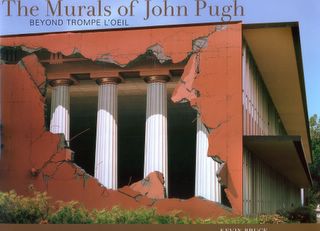
Big Band crooner honored in Oroville, teams with Magalia writer to tell life story
By DAN BARNETT
He begins the story this way: "Smog hadn't been invented yet when I was born Harry Bradbury Albretsen on Oct. 21, 1916, in Eagle Rock, California, a suburb of Los Angeles."
Almost 90 years later, on Sept. 17, 2006, this same man, now known as "Garry Stevens" (a stage name he adopted in 1941), was honored with a surprise birthday celebration as he sang at Feather Falls Casino in Oroville with "The Fabulous Swing Kings," the Chico-based dance band. It had been a long road, but Stevens was still smiling.
Pictures from the birthday bash appear on the Jazz Connection Magazine Web site (www.jazzconnectionmag.com). Publisher Stephen Fratallone of Magalia helped organize the surprise; he writes me that "I have always been a fan of Big Band music since I was 12 (I'm 49 now). I play saxophone and I took private lessons from Don Raffell, a prominent studio musician who played in the Charlie Spivak band when Garry was Spivak's boy vocalist. That's when I first heard of Garry Stevens." Fratallone discovered that Stevens was still alive, living in Benicia, and they became fast friends.
That friendship has led to the publication of "Band Singer: An Autobiography" ($15 in paperback from jazzconnection@hotmail.com) by Garry Stevens with Stephen Fratallone. The book contains a discography and a generous sampling of black and white photographs. Stevens by now has outlived most of his friends, and he notes their passing throughout the narrative. But the story is full of "Zip-A-Dee-Doo-Dah" as Stevens works to "Ac-Cent-Tchu-Ate the Positive." It's a fun book.
Stevens worked with Nelson Riddle, also a member of the Spivak band, and he writes that "one of Nelson's arrangements became a chart-topper for the band and it helped to keep me in the public ear for a couple of years during the musicians' union strike. It was Irving Berlin's holiday classic, 'White Christmas.' We recorded it on July 1, 1942, in New York. ... Bing Crosby, of course, had the definitive hit version of the song" but Stevens' version continued to be played on jukeboxes through the mid-1940s. He also recorded "My Devotion," which "became one of the more popular romantic ballads to come out of World War II."
Stevens enlisted in the Army Air Corps. "Before the war, I was named one of the top male band vocalists in the country. I was going to go back to civilian life and try to pick up where I had left off. It didn't occur to me that the music business had changed during those years and retracing my steps would prove to be very difficult." He joined the Gordon "Tex" Beneke band, whose pianist was Henry Mancini. No longer a "boy singer," Stevens began to relish the term "band singer." "A band singer sings in tempo. Cabaret singers like Frank Sinatra and Tony Bennett sing more ad-lib. ... When you sing with a band, you sing for dancers and in tempo. If you start to ad-lib, you'll throw the dancers a curve, and they won't like it."
In the 1950s Stevens had a local television show, later worked in real estate, and got back into music in 1980, eventually moving to California and joining the Big Band Academy of America. Stevens' personal life has had its ups and downs, but music has been his soul. He calls himself the "oldest self-taught band singer in the business." At 90, he's still jazzed.
Dan Barnett teaches philosophy at Butte College. To submit review copies of published books, please send e-mail to dbarnett@maxinet.com. Copyright 2006 Chico Enterprise-Record. Used by permission.


